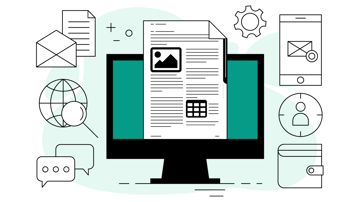The executive summary is the first impression your business proposal makes—and often the only section decision makers will read in full. It’s not just a summary; it’s a pitch. A compelling executive summary shows clients that you understand their pain points, align with their goals, and offer the best solution.
In this guide, you’ll learn how to write an effective executive summary that serves as both a project management tool and a persuasive business case—boosting your chances of success in competitive tenders.
What Is an Executive Summary?
An executive summary is a high-level overview of your business proposal. Its job is to distill the most important points of your offer into a concise, client-focused narrative.
It must:
- Highlight key points of your response
- Address the client’s needs and desired outcomes
- Present your proposed solution clearly
- Provide evidence of your ability to deliver
- Position your company as the best fit
Think of it as the section of the executive summary that answers the client’s internal question: Why should we choose you?
When used well, it not only summarizes—it persuades.
Why the Executive Summary Matters
Too often, the executive summary is treated as an afterthought. But done right, it serves three essential functions that elevate your entire proposal.
1. A Client-Facing Marketing Aid
In many tenders, evaluation teams split the review process across departments. Not every evaluator reads the full proposal—but most will read the executive summary. That makes it a critical piece of marketing, framing your offer in the best possible light before the deeper review begins.
2. A Writing Aid for Your Team
Writing the executive summary early helps your team align around a shared vision. It shapes the structure, tone, and messaging of the entire proposal. If you leave it until the end, you miss the chance to steer the direction of your response from the start. Think of it as the anchor for your writing team—providing clarity and consistency throughout the process.
3. A Tool for Focus
A focused summary shows the client you understand their business, strategy, and objectives. It builds confidence before they dive into the technical sections—and ideally, positions you as the preferred partner.
Set Up for a Strong Executive Summary
Before writing the executive summary, it's important to create the right environment for developing a high-quality response. A well-organized setup process ensures your summary will be consistent, informed, and aligned with the client’s expectations.
Here’s how to prepare:
1. Centralize Collaboration
Make sure all team members contributing to the proposal are working from a shared, centralized location—whether it’s a secure server, cloud workspace, or proposal management tool. This improves transparency, allows easier progress tracking, and reduces risks from working in silos.
2. Structure the Response Early
Your executive summary should reflect the structure of the full submission. If the tender includes separate volumes (e.g. Technical, Commercial) or requires uploads to a client portal, structure your content accordingly from the start. Avoid having to restructure everything later.
3. Build Around Client Questions
Extract and replicate the client’s questions within your draft responses. This not only helps ensure all areas are addressed but also lets the executive summary mirror the priorities and phrasing of the original tender—making it easier for evaluators to connect the dots.
4. Match Numbering and Terminology
Using the same numbering system and vocabulary as the tender documents makes it easier for evaluators to navigate your proposal—and builds credibility. Your executive summary should reference the structure the client expects.
5. Draft the Executive Summary Early
Even a rough version of the executive summary created at the start of the process can help unify the writing team. It acts as a guiding framework, keeping content aligned with client priorities and ensuring consistency across every section.
By approaching the executive summary as part of your initial tender planning—not just a final step—you set the stage for a more strategic, coherent, and persuasive proposal.
Common Mistakes to Avoid
Let’s be clear: a great executive summary is not just a retelling of your business proposal.
Avoid these pitfalls:
- Starting with company history. Clients care more about their goals than your backstory. Save it for the appendix.
- Focusing on features, not benefits. Talk about how your solution helps the client—not just what it includes.
- Writing it last. Early development allows it to guide the rest of your proposal.
- Using generic language. Mirror the language from the RFP to show you understand the ask.
Structure of an Effective Executive Summary
A proven approach is the N-O-S-E structure, developed by proposal expert Tom Sant. It helps structure your message in a way that resonates with decision makers.
N – Needs: Start by showing you understand the client’s challenges. Use their language and data.
O – Outcomes: Describe the results they want to achieve. Link them to KPIs, timelines, and success metrics.
S – Solution: Present your proposed solution, clearly connecting it to their needs and desired outcomes.
E – Evidence: Provide proof—case studies, references, and measurable results from similar projects.
This model ensures your executive summary answers the "what," "why," and "how" behind your proposal.
How to Keep Your Executive Summary Client-Focused
The best executive summaries are tailored—not templated. Here’s how to keep yours laser-focused on the client.
Start With Their Priorities. Use early conversations, RFP documents, and project briefings to identify what matters most to the client. What risks are they trying to avoid? What business goals are they pursuing?
Use these insights to:
- Match your proposed solution to their pain points
- Show clear alignment with their objectives
- Mirror their language—reuse phrases from the tender documentation
Think Long-Term
Your proposal should solve immediate problems—but it should also show that you understand their future direction. Highlight how your solution:
- Supports long-term growth or transformation
- Aligns with their strategic roadmap or business plan
- Scales with their evolving needs
Emphasize Value
Don’t just list features—translate them into business outcomes. Ask: What will this do for their organization?
Include:
- Measurable impact (e.g., cost savings, revenue growth, efficiency gains)
- Customer satisfaction metrics
- Testimonials or performance data
- Comparisons to industry benchmarks
Formatting Tips for Maximum Impact
Clients are busy. Make your executive summary easy to skim—but hard to ignore.
- Keep it brief
Most summaries should be 2 to 4 pages. For complex bids, up to 8 pages may be appropriate. Anything longer loses its “summary” power. - Use structure and design
Incorporate headings, bullet points, and visuals to break up the content. Highlight key points using bold text or callout boxes to draw attention. - Consider a standalone format
Many bidders create the executive summary as a separate document or leaflet. This makes it easier for client executives to share internally—especially with large evaluation teams or stakeholders who may not read the full proposal.
Design the layout professionally. A clear, well-presented summary strengthens your credibility and makes your proposal easier to navigate.
Best Practices When Writing
Develop It Early. Start during the project management phase of the tender pursuit. This allows the summary to shape your internal writing process and help team members stay aligned. Review and refine it at the start of the formal proposal phase to ensure it aligns with the RFP and project goals.
Use It to Guide Proposal Development. Once drafted, share it with your writing team. It should act as a north star, helping everyone stay focused on what matters most to the client. This ensures consistency of tone and messaging across all sections of your business proposal.
Make It Persuasive Not Just Informative. You’re not just informing—you’re persuading. This is your chance to shift perception, gain trust, and position your offer as the most credible and value-driven option.
Consider including:
- A one-sentence value proposition
- A visual summary of results or benefits
- A call to action or next step (e.g. project kickoff, trial phase)
Tailoring for Different Proposal Types
Whether you're writing an executive summary for a government tender, a private sector bid, or an internal business plan, your tone and emphasis may shift.
- Government tenders: Stick closely to RFP criteria. Emphasize compliance and risk management.
- Private companies: Focus on ROI, competitive advantage, and customer satisfaction.
- Internal business cases: Highlight strategic alignment, resource use, and stakeholder value.
Each context calls for a different flavor of persuasion, but all share the same structure of needs, outcomes, solution, and proof.
Checklist
Before submitting your proposal, run your executive summary through this checklist:
- Does it open with the client’s key issues or goals?
- Is your proposed solution clearly explained and benefit-driven?
- Have you included measurable outcomes or evidence?
- Is it aligned with the rest of the proposal content?
- Does the tone match the client’s industry and communication style?
- Can it stand alone as a summary document?
If you can check every box, you’ve written an executive summary that pulls its weight.
Final Thoughts: Your Executive Summary Sets the Tone
Your executive summary is more than just an introduction—it’s your proposal’s front door. It shapes how the client perceives you, influences how reviewers approach the rest of your content, and can often determine whether your proposal gets shortlisted.
By making it persuasive, client-centric, and aligned with the tender’s strategic goals, you significantly increase your chances of standing out.












